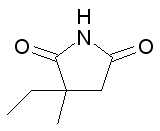* See page 886 for definitions of evidence labels.
As part of a multiphase project under contract with the Agency for Healthcare Research and Quality (AHRQ) and a topic nomination by the Centers for Disease Control and Prevention, we conducted a systematic review of the literature on interventions in patients with newly diagnosed epilepsy. Of the 120 studies identified as eligible for inclusion, most qualified as evidence level B with only 25 percent qualifying as Level A evidence. Thirty-eight of the studies involved children, 38 involved adults, and the remainder included both children and adults. Key project questions and literature findings are presented in this editorial and are reported in full, along with methods, in an AHRQ publication. (1)
What expertise, services, and tests are required to make the diagnosis of epilepsy and to initiate and monitor optimal treatment?
The literature suggests that diagnostic interventions should be tailored to the specific patient population. Different diagnostic approaches may be required in elderly patients, young children, and patients with suspected juvenile myoclonic epilepsy, absence seizures, or temporal lobe epilepsy.
The literature supports the value of a careful history, especially in diagnosing juvenile myoclonic epilepsy but also in obtaining a description (e.g., focal onset) that is sufficient to determine seizure type. The evidence indirectly supports the contribution of a careful neurologic examination (i.e., abnormal neurologic findings after a first seizure predict recurrence). The literature does not provide enough evidence to determine whether blood tests performed at the time of a first seizure are useful in diagnosing epilepsy and predicting seizure recurrence, although such testing may be useful in ruling out secondary causes of seizures.
Nearly all of the studies we reviewed mentioned the standard electroencephalogram (EEG) as an absolute requirement for the diagnosis of epilepsy. The literature suggests that antiepileptic drugs can confound EEG diagnosis of juvenile myoclonic epilepsy. In elderly patients with new-onset epilepsy, magnetic resonance imaging appears to be useful. Ambulatory EEG and video EEG may have a role in the initial diagnosis of epilepsy in very young children, patients with poorly characterized seizure types, and patients with suspected psychogenic seizures.
The literature provides insufficient evidence to determine the cumulative contribution of each test to an accurate diagnosis. There also is not enough evidence to determine the sensitivity and specificity of individual diagnostic tests.
What criteria should be used to guide decisions about the timing and selection of treatments for patients with newly diagnosed epilepsy?
Antiepileptic drugs used in the reviewed studies were (in order of decreasing frequency) carbamazepine, valproate, vigabatrin, phenobarbital, oxcarbazepine, phenytoin, gabapentin, lamotrigine, ethosuximide, clonazepam, and primidone. The type of seizure appeared to be the main determinant of the choice of agent. Studies of comparable patient populations typically showed no differences in the efficacy of anti-epileptic drugs, although we performed no formal statistical comparisons.
What interventions are necessary to monitor the first epileptic drug regimen adequately or to ensure that the diagnosis of epilepsy was correct?
None of the reviewed studies had, as a primary objective, an assessment of monitoring interventions that are necessary for optimal patient care. Thus, necessary and appropriate monitoring remains to be determined by the treating physician without support from the literature.
What aspects of clinical and pharmacologic expertise have been demonstrated to result in optimal outcomes in patients with epilepsy?
Although evidence is sparse, the literature suggests that access to clinical expertise could minimize misdiagnosis and delay in diagnosis. Access to clinical expertise also could improve the choice and timing of initial antiepileptic drug monotherapy. Although remission rates ranging from 35 to 60 percent were reported in most of the antiepileptic drug studies, the highest remission rates (79 to 84 percent) were reported in the studies that employed clinical or pharmacologic expertise for treatment decisions. (1)
What social services, counseling, and information are necessary for patients at the time of first diagnosis of epilepsy?
No published evidence addressed the social services, counseling, and information that are necessary for patients with newly diagnosed epilepsy.
In the care of patients with epilepsy, "no seizures and no side effects equals control." (2) There are three steps to achieving this goal:
prompt and accurate diagnosis of epilepsy in patients presenting with epileptic seizures; administration of an appropriate first treatment intervention; and adequate monitoring to ensure not only the efficacy and safety of the treatment intervention but also the accuracy of the initial epilepsy diagnosis. Although evidence supporting the best approach to these steps is limited, physicians should strive to control epilepsy by using sound clinical judgment and applying the best available evidence.
This study was conducted by the MetaWorks Evidence-based Practice Center under contract with the AHRQ (contract no. 290-97-0016).
The authors are responsible for the content of this editorial, including any clinical or treatment recommendations. No statement in this article should be construed as representing an official position of the AHRQ or the U.S. Department of Health and Human Services.
REFERENCES
(1.) Ross SD, Estok R, Chopra S, French J. Management of newly diagnosed patients with epilepsy: a systematic review of the literature. Rockville, Md.: Agency for Healthcare Research and Quality, September 2001; Evidence report/technology assessment no. 39 (contract 290-97-0016 to MetaWorks, Inc.), AHRQ publication no. 01-E038.
(2.) Living well with epilepsy. Report of the 1997 National Conference on Public Health and Epilepsy. Accessed online May 5, 2004, at: http://www.cdc.gov/nccdphp/epilepsy/epilepsy.pdf.
SUSAN ROSS, M.D., is chief scientific advisor at MetaWorks, Inc., Medford, Mass.
RHONDA P. ESTOK, R.N., B.S.N., is clinical information specialist at MetaWorks, Inc.
SAMEER S. CHOPRA, M.A., is a doctoral candidate at Vanderbilt University School of Medicine, Nashville.
JACQUELINE FRENCH, M.D., is professor in the Department of Neurology and director of the epilepsy center at the University of Pennsylvania School of Medicine, Philadelphia.
Address correspondence to Susan Ross, M.D., MetaWorks, Inc., 10 President 's Landing, Medford MA 02155. Reprints are not available from the authors.
COPYRIGHT 2004 American Academy of Family Physicians
COPYRIGHT 2004 Gale Group



